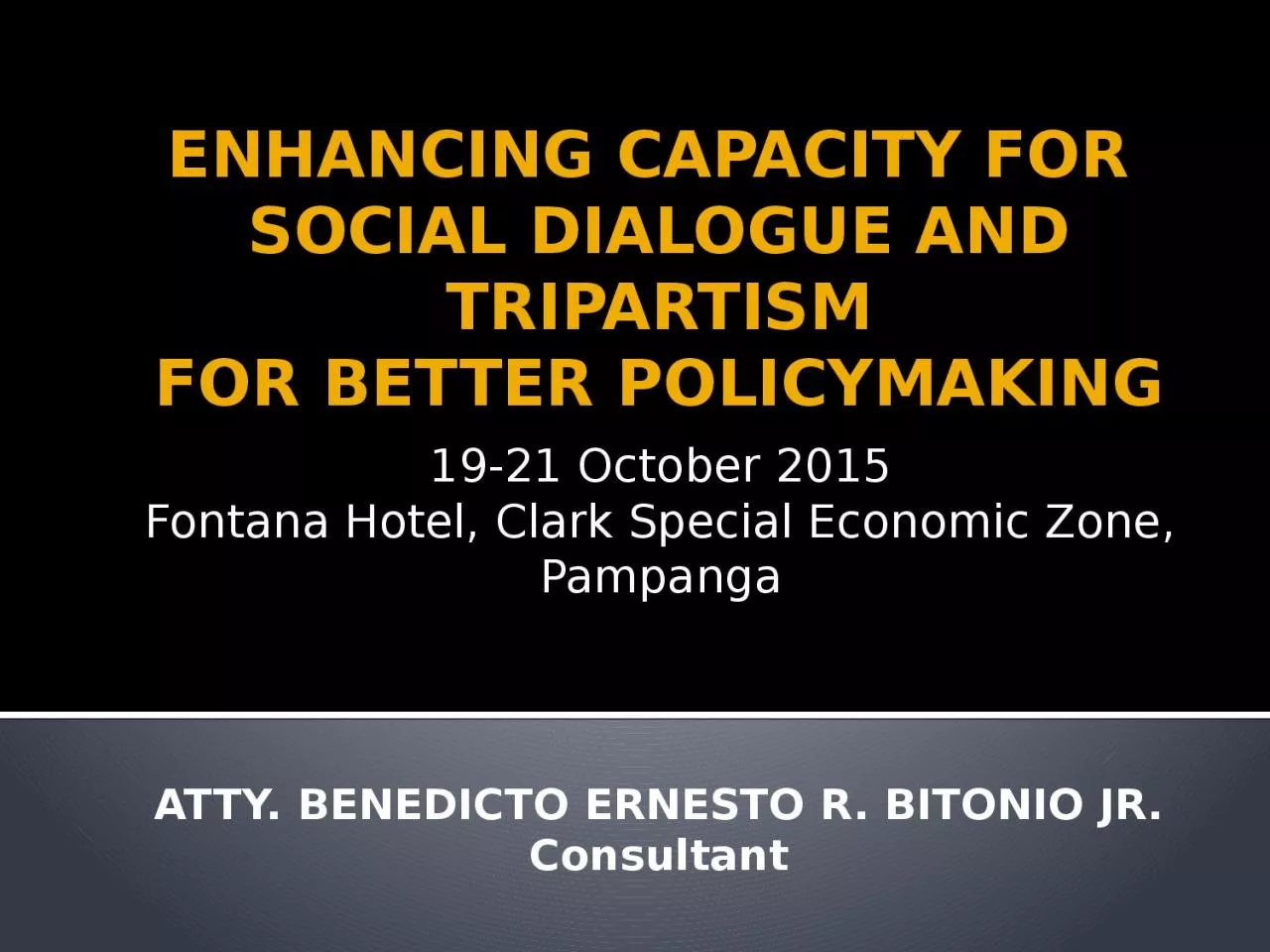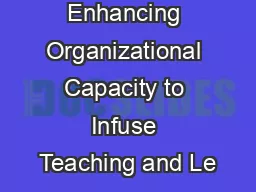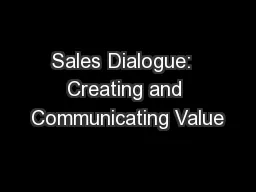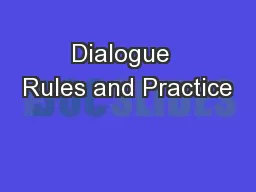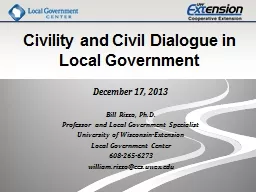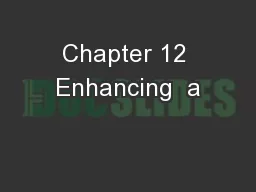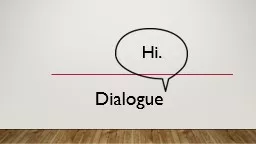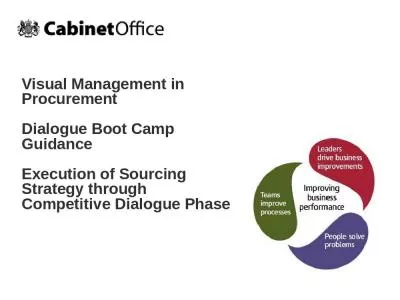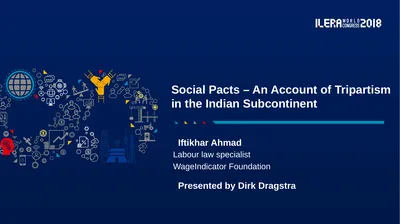PPT-ENHANCING CAPACITY FOR SOCIAL DIALOGUE AND TRIPARTISM
Author : roberts | Published Date : 2023-11-06
FOR BETTER POLICYMAKING 1921 October 2015 Fontana Hotel Clark Special Economic Zone Pampanga ATTY BENEDICTO ERNESTO R BITONIO JR Consultant Outline Policy practice
Presentation Embed Code
Download Presentation
Download Presentation The PPT/PDF document "ENHANCING CAPACITY FOR SOCIAL DIALOGUE ..." is the property of its rightful owner. Permission is granted to download and print the materials on this website for personal, non-commercial use only, and to display it on your personal computer provided you do not modify the materials and that you retain all copyright notices contained in the materials. By downloading content from our website, you accept the terms of this agreement.
ENHANCING CAPACITY FOR SOCIAL DIALOGUE AND TRIPARTISM: Transcript
Download Rules Of Document
"ENHANCING CAPACITY FOR SOCIAL DIALOGUE AND TRIPARTISM"The content belongs to its owner. You may download and print it for personal use, without modification, and keep all copyright notices. By downloading, you agree to these terms.
Related Documents

